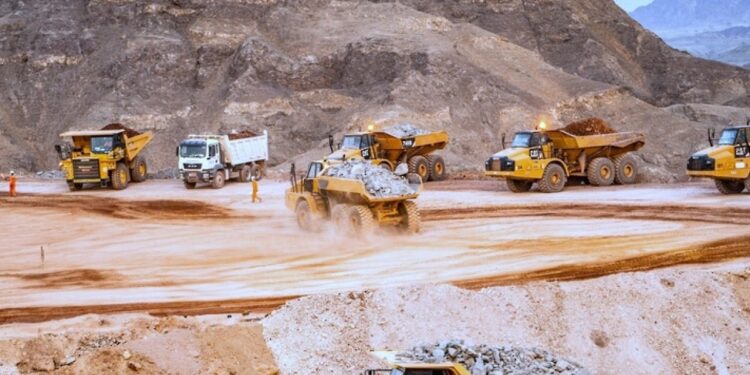Muscat The Sultanate of Oman is witnessing a new milestone in its economic journey with the Oman Minerals Development Company announcing the export of the first shipment of copper concentrate weighing 900 tons from the Aseel mine in the state of Sohar (north of the country), through the port of Sohar. This step, which comes after a 30-year hiatus, embodies the Sultanate’s commitment to diversifying its economy and enhancing its sustainability in line with the goals of Oman Vision 2040.
The CEO of the Oman Minerals Development Company, Engineer Matar bin Salem Al Badi, said that this achievement represents a milestone in the mining sector, expressing his happiness at the resumption of the export of copper from a historical region that was distinguished and known for mining this metal for more than 3,000 years, and this reflects the continuation of the historical legacy of Oman. In the field of mining.
Al Badi pointed out that the mining sector is witnessing remarkable development in the Sultanate through exploration and extraction strategies, and this enhances the added value of mining projects and contributes to achieving sustainable economic and social returns.
An ambitious vision and future expansion
The Al Aseel mine, which represents the first step towards realizing the company’s vision, is located in Concession Area 11B in the state of Sohar. The company produces high-quality copper concentrates with concentrations of up to 22%. The average annual production from the mine is about 500 thousand tons of copper ore.
The company also plans to expand the scope of its work by developing the Al-Bayda mine in Liwa State (north of the country) during the years 2025 and 2026, as its reserves are estimated at approximately 2.78 million tons of copper ore.
The first phase of the project is expected to last between 4 to 5 years, with exploration efforts continuing to enhance copper reserves and ensure continuity of production.
Copper…a strategic metal for the era of transformation
Copper is emerging as a key metal in renewable energy technologies, electronics, electric cars, and batteries, and this enhances the Sultanate’s position in the global market. The head of the Al Moasher Center for Economic and Financial Consultations, the economic expert, Dr. Ahmed bin Saeed Kashoub, explained to Al Jazeera Net that the Sultanate’s trend towards developing the mining sector began 20 years ago, until the number of licenses reached more than 13 concession areas and the discovery of more than 16 million tons of copper, pointing out that Copper is a strategic material used in modern industries, which places Oman in a strong competitive position globally.
Kashoub pointed out that the Sultanate possesses large reserves and, according to some studies, production may reach 60 million tons of copper, stressing the importance of employing these resources to support national industries and develop the local economy, through industrial projects such as building materials and refractory materials.
A promising horizon for the Omani economy
The Sultanate does not stop at redeveloping the Aseel and Al Bayda mines, as it is exploring other surrounding areas to enhance copper reserves, and is developing ambitious plans for expansion through the Mazoon Copper Project, which is the largest integrated project for the production of copper concentrates in the Sultanate of Oman.
The Sultanate affirmed its intention to restore its historical position in the global copper market, with a focus on the sustainability of the sector and maximizing its economic and social returns.
The Sultanate of Oman is one of the oldest places for copper extraction and manufacturing in the world, with its history dating back thousands of years. Archaeological excavations revealed many copper mining and smelting sites in the Al Batinah region and the Hajar Mountains, confirming that the early Omanis were pioneers in exploiting this strategic metal.
Omani copper contributed to enhancing ancient trade, as it was exported to civilizations such as Mesopotamia and the Indus Valley through famous Omani ports such as Sohar. The Sultanate maintained its position as a major exporter of raw and manufactured copper, which reflects the depth of its connection with history and industry.
The Sultanate of Oman was known in the ancient Mesopotamian, Sumerian and Akkadian texts, as “Majan”, which means “Copper Mountain”, in reference to its richness in copper metal, which was exported to the Mesopotamian civilizations thousands of years ago. These texts were written in cuneiform, emphasizing Oman’s strategic position and natural resources.



